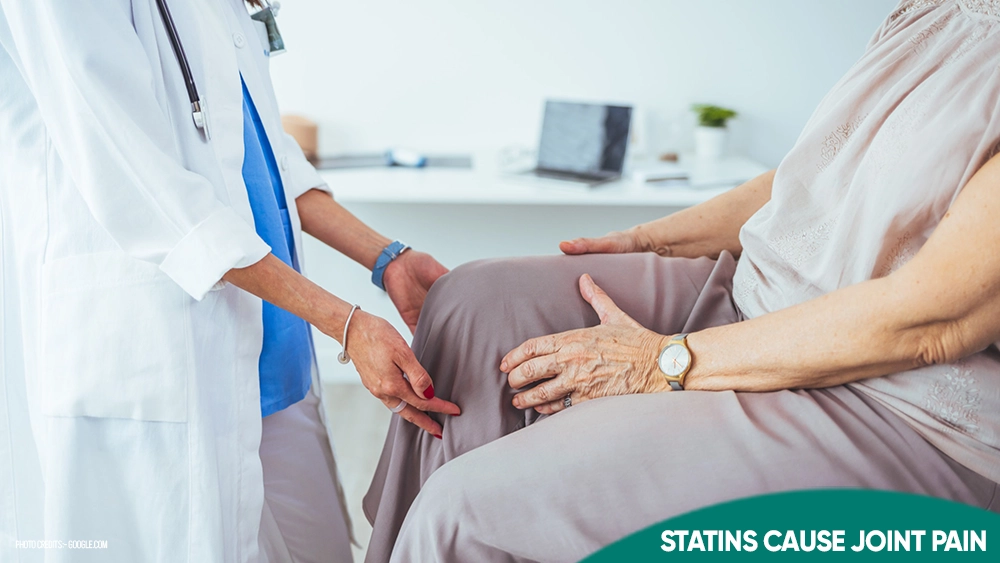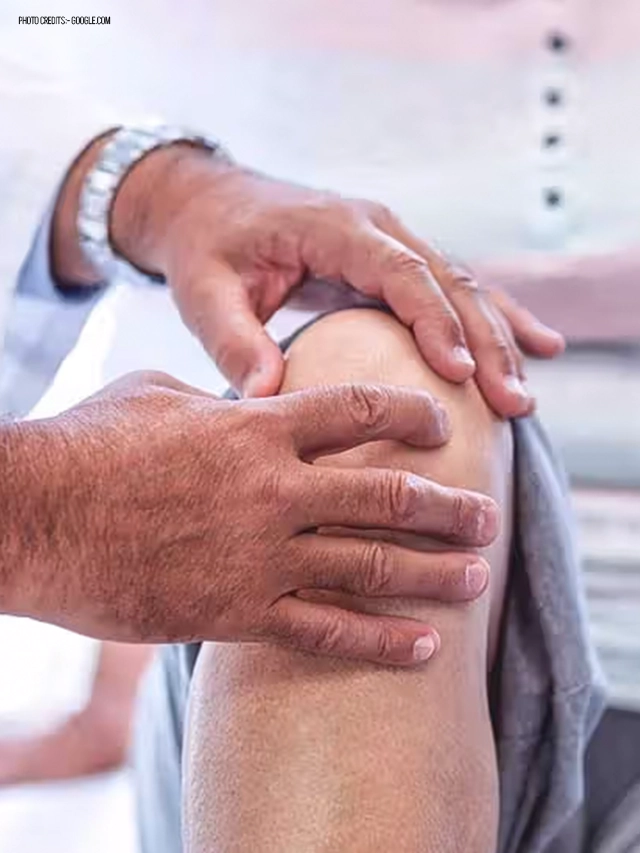
HEALTH BLOG
Do Statins Cause Joint Pain: Should You Be Concerned?
-
Rahul Priydarss
Do statins cause joint pain? While joint pain is a less common side effect compared to muscle aches, some individuals may experience discomfort. This article explores the connection between statins and joint pain, explaining possible causes like CoQ10 depletion and inflammation. Learn about high-risk groups, management strategies, and alternatives such as PCSK9 inhibitors and lifestyle changes. Discover how adjusting doses or switching medications can alleviate symptoms while maintaining heart health. If you’re concerned about joint pain while on statins, this detailed guide offers practical insights to help you make informed decisions and consult with your doctor effectively.
Introduction What Are Statins and Why Are They Prescribed:
Statins are a class of medications designed to lower cholesterol levels in the blood, helping to prevent cardiovascular diseases such as heart attacks and strokes. They work by inhibiting the enzyme HMG-CoA reductase, which plays a key role in the liver’s production of cholesterol. By reducing “bad” LDL cholesterol and raising “good” HDL cholesterol, statins help prevent the buildup of plaque in arteries, improving blood flow and reducing the risk of heart-related conditions.
Some of the most commonly prescribed statins include:
- Atorvastatin (Lipitor)
- Rosuvastatin (Crestor)
- Simvastatin (Zocor)
- Pravastatin (Pravachol)
- Fluvastatin (Lescol)
While statins are highly effective for many people, no medication is without potential side effects. Most patients tolerate statins well, but some experience side effects like muscle pain, cramps, or fatigue. Additionally, joint pain has been reported by some individuals, though it is less common than muscle-related symptoms. Understanding the connection between statins and joint pain can help patients make informed decisions about their treatment and explore management strategies when needed.

Table of Contents
How Common Is Joint Pain with Statin Use:
Joint pain is not as widely reported as muscle pain among statin users. Muscle-related side effects, such as muscle aches, myopathy, or rhabdomyolysis (in rare cases), occur more frequently. Studies suggest that only a small percentage of statin users experience joint pain or joint stiffness, though the actual prevalence may vary depending on the population studied.
Older adults or people with underlying musculoskeletal issues may be more likely to notice joint discomfort. Additionally, the symptoms can sometimes overlap with existing conditions, such as osteoarthritis or rheumatoid arthritis, making it challenging to determine whether statins are the direct cause of the joint pain.
Research on Statins and Joint Pain: Most clinical trials and post-marketing studies have focused on the muscle-related side effects of statins, but some research has investigated the relationship between statins and joint pain. In general, the incidence of joint pain is relatively low, and many patients experience only mild symptoms. Some studies suggest that a placebo effect or nocebo effect may also be at play, where patients expect to experience pain due to fears about side effects.
How Statins Might Cause Joint Pain:
There are several possible explanations for why some people on statins develop joint pain. Although statins are primarily associated with muscle issues, joint pain can result from indirect mechanisms related to how the drug affects muscles and metabolism. Below are some of the key theories.
Depletion of CoQ10 Levels: Statins inhibit the production of Coenzyme Q10 (CoQ10), a compound essential for energy production and muscle function. When CoQ10 levels drop, muscles may become weaker or fatigued, which can indirectly place extra strain on joints as they work harder to support the body’s movements. This additional strain may result in joint discomfort or stiffness over time.
Inflammatory Response Imbalance: While statins are known to have anti-inflammatory effects in the cardiovascular system, they may cause mild inflammation in other tissues, including muscles and joints, in some people. This inflammation could contribute to joint stiffness or pain.
Impact on Tendons and Ligaments: Some research suggests that statins may affect the structure and health of tendons and ligaments, which play a crucial role in joint function. There have been rare reports of tendonitis (inflammation of tendons) in statin users, which can cause joint pain, especially in the knees, elbows, or shoulders.
Who Is at Greater Risk of Joint Pain from Statins:
Not everyone taking statins will experience joint pain, but certain individuals may be more vulnerable. Below are some factors that can increase the risk.
Older Adults: Aging naturally leads to joint degeneration and reduced muscle mass. Statins may exacerbate these existing issues, making joint pain more noticeable among older individuals.
People with Pre-Existing Joint Conditions: Patients with arthritis, lupus, or other joint disorders may find that statins worsen their symptoms. Joint pain that already exists due to these conditions might be amplified when statins are introduced.
High-Dose Statin Users: Taking higher doses of statins has been linked to a greater incidence of side effects. If joint pain occurs, reducing the dosage may help alleviate symptoms without compromising cholesterol management.
People on Multiple Medications: Certain medications, such as fibrates, immunosuppressants, or corticosteroids, can interact with statins, increasing the risk of musculoskeletal side effects, including joint pain.

How to Manage Joint Pain While Taking Statins:
If you experience joint pain while on statins, it is essential to consult your doctor rather than stopping the medication on your own. Your healthcare provider may suggest several strategies to address the issue:
Adjusting the Statin Dose: In some cases, reducing the dose of your statin can relieve joint discomfort without significantly impacting cholesterol levels.
Switching to a Different Statin: Some statins, such as pravastatin or fluvastatin, are less likely to cause musculoskeletal side effects. Your doctor may recommend switching to one of these alternatives.
Using CoQ10 Supplements: Although scientific evidence on the effectiveness of CoQ10 supplements is mixed, some patients find relief from muscle and joint symptoms by taking them.
Incorporating Exercise and Physical Therapy: Engaging in low-impact exercises like swimming, yoga, or walking can help strengthen muscles and reduce strain on joints. Physical therapy can also be beneficial in improving joint function and alleviating discomfort.
Alternatives to Statins for Cholesterol Management:
For individuals who cannot tolerate statins due to side effects like joint pain, there are several alternative options.
Ezetimibe: Ezetimibe works by blocking cholesterol absorption in the intestines and can be used as a monotherapy or in combination with statins.
PCSK9 Inhibitors: PCSK9 inhibitors, such as alirocumab and evolocumab, are injectable medications that significantly lower LDL cholesterol. They are often prescribed for patients who cannot tolerate statins.
Bile Acid Sequestrants: These drugs bind to bile acids in the intestines, promoting cholesterol excretion. However, they may cause gastrointestinal side effects.
Lifestyle Modifications: Adopting a heart-healthy diet, increasing physical activity, quitting smoking, and maintaining a healthy weight are essential strategies for managing cholesterol levels naturally.
When to Consult Your Doctor:
It’s important to monitor any new or worsening joint pain while taking statins and report it to your healthcare provider. Your doctor may conduct blood tests or imaging studies to rule out other causes of joint pain, such as arthritis or autoimmune conditions. If statins are determined to be the cause, your doctor will work with you to find the most appropriate treatment plan.
FAQs Do Statins Cause Joint Pain:
A1: Yes, while joint pain is less common, some individuals may experience it as a side effect of statins.
A2: Statins may lead to joint pain by reducing CoQ10 levels, causing inflammation, or impacting tendons and muscles.
A3: Older adults, people with pre-existing joint issues, and those on higher statin doses may have a higher risk.
A4: Lowering the dose, switching medications, or using CoQ10 supplements may help alleviate symptoms.
A5: Yes, PCSK9 inhibitors, lifestyle changes, and other medications are potential alternatives for managing cholesterol.

-Please remember, to always consult with healthcare professionals or Doctors for personalised advice related to medical conditions.
Conclusion:
While Do Statins Cause Joint Pain is a possible side effect of statins, it is relatively uncommon. Most people tolerate statins well, with muscle-related side effects being more prevalent. If you experience joint discomfort while on statins, consult your doctor before making any changes to your medication. With the right adjustments—whether through dose reduction, switching medications, or lifestyle changes—you can manage your cholesterol levels effectively without compromising joint health.




